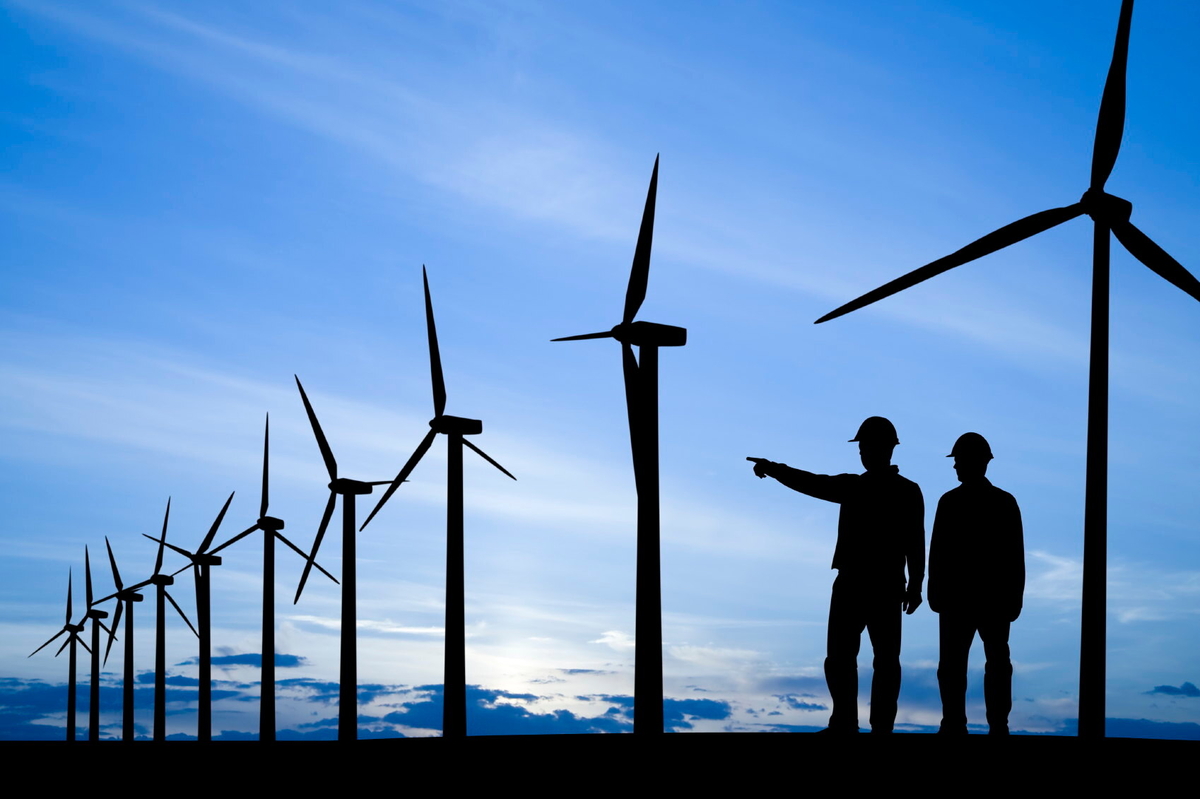What does it take to build a wind farm? From project development to testing, there are a number of steps required to convert breezes to the energy that reaches your light switch, and construction is an important part of the process.
Once we get regulatory approval for a wind farm, we finalize scheduling, landowner notifications, contractor coordination and safety programs. We work with union contractors, laborers and local emergency response teams to create safety plans in case of emergency. Developing traffic flow for emergency vehicles, holding site tours with first responders and identifying equipment needs for different situations are just some of the things we include as part of the safety plan.
Before any other construction activities, we first grade land to create access roads and equipment unloading zones so we can bring in materials and trailers that house temporary offices for crews. The goal is to have everything ready to go before workers, between 100 and 200 on average, arrive on-site.
Construction crews flow through the site like a reverse assembly line; the pieces and parts stay in place while the workers rotate throughout the site assembling turbines. They dig holes for the foundation, pour concrete and finally assemble the tower and turbines. They do all this moving in a preplanned connect-the-dots fashion at the location of each turbine.
In the site plan, we determine the locations of groups or “strings” of turbines. Strings, like bunches of grapes on a vine, connect to a substation where the electricity goes to the transmission grid. Sometimes strings need to be connected across obstacles like roads, drainage ditches and bodies of water. When this happens, our project engineers and construction crews strive to minimize the impact of the project on the land, infrastructure and ecosystems within the site.
One way we do this, like when a chipmunk burrows, is to connect turbines underground. For example, let’s say the obstacle is a creek. Crews dig holes deeper than the creek and connect the holes under the creek with a small tunnel that will eventually hold cables connecting turbines to the substation. This avoids the need to dig a trench through the creek and prevents any negative environmental impact.
After all the turbines are assembled, clean up begins, and the land is restored to how we found it. This includes mending soil that was compacted with large equipment and vehicles. For projects constructed on farmland, we take extra steps to make the land productive for farming again without a major loss in yield.
During the construction phase of the project, local communities benefit from the large number of project staff, construction crews and other personnel that migrate to the project area. This inflow of people stimulates the local economy, supporting local businesses like hotels and restaurants.
As these towering turbines harness the power of the wind, they not only generate electricity but also contribute to our ongoing efforts to mitigate greenhouse gas emissions, serve our customers and build strong communities.

Building a wind farm

Grant Barton
Communications Partner
Published on November 16, 2023
Grant Barton is a Communications Partner with a passion for sustainability and eco-friendly city planning. He has a diverse background in engineering, politics and international communications and hopes to apply this experience when writing and breaking down complex topics related to Alliant Energy's Clean Energy Future plans.
Recent Stories
130-year-old northern Wisconsin manufacturer logs energy efficiency milestone
Great Lakes Veneer in Marion, Wisconsin earned a 2023 Energy Efficiency Excellence Award from Focus on Energy.
Read More
Ask an engineer: Three-phase vs. single-phase motors
Are three-phase motors more efficient than single-phase ones? Three-phase motors are slightly more efficient and cost-effective for two reasons: The power delivery mechanism and motor design.
Read More
Alliant Energy powers Cedar Rapids' economic development
Alliant Energy is a key partner in Cedar Rapids' economic development efforts. This includes investing in one of the state’s largest development-ready sites and partnering with local organizations to support our customer’s sustainability goals.
Read More